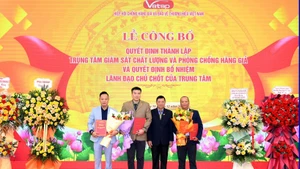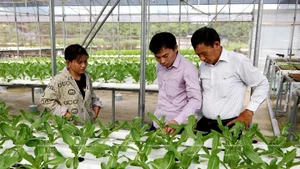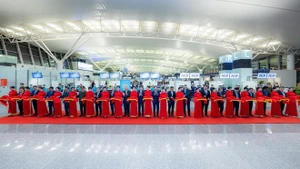“My family has been in this trade for five generations. We earn just enough to live, not to be rich. But giving up the craft would feel like losing a part of myself,” he said, smiling gently.
His words capture a deeper truth: the value of craft villages lies not only in their products, but also in the people and the stories behind them. Today’s visitors no longer come just to buy souvenirs — they seek experiences, wanting to hear the stories of those who make them. That is what transforms handmade crafts into part of a cultural industry — where tradition meets creativity.
Ha Noi is home to more than 1,350 craft villages, nearly 300 of which are officially recognised. Each village is a cultural treasure, with the potential to become a distinctive tourism product if invested in properly. The city is implementing policies to honour, preserve, and promote the role of artisans through titles such as “People’s Artisan” and “Meritorious Artisan,” while offering financial and healthcare support to help them sustain and pass down their crafts.

In Bat Trang, Tran Do has successfully revived ancient ceramic enamel techniques, contributing to preserving the essence of Vietnamese pottery. Artisan Ha Thi Vinh, a pioneering businesswoman, has modernised production and brought Bat Trang ceramics to international markets. Younger artisans such as Vu Nhu Quynh or Phan Thi Thuan from Phung Xa — a creator of Vietnamese lotus silk — prove that tradition can be reborn with intellect and innovation.
The biggest challenge for craft villages remains capital. Despite the existence of support funds under Decree No. 52/2018/ND-CP, many facilities struggle to access credit due to a lack of collateral. A more flexible financial mechanism is needed, which values artisans’ reputation and skills as assets and capital support for projects on technological innovation, environmental treatment, and experiential tourism development.

In today’s creative economy, the value of a handcrafted product lies in the experience it offers. Pottery-making tours in Bat Trang, silk weaving in Van Phuc, conical hat making in Chuong, and bamboo weaving in Phu Vinh all prove that “culture can become an industry” when properly organised. Tourists now pay not just to purchase goods, but also to live with heritage — to hear, to touch, and to make craft products with artisans.

Developing cultural industries in connection with traditional craft villages allows Ha Noi to preserve its soul amid modern life — conserving traditional values while generating resources for green and sustainable growth. So long as the sound of hammers and looms continues to echo through its streets, the culture of the capital still breathes — enduring, sophisticated, and full of life.
















